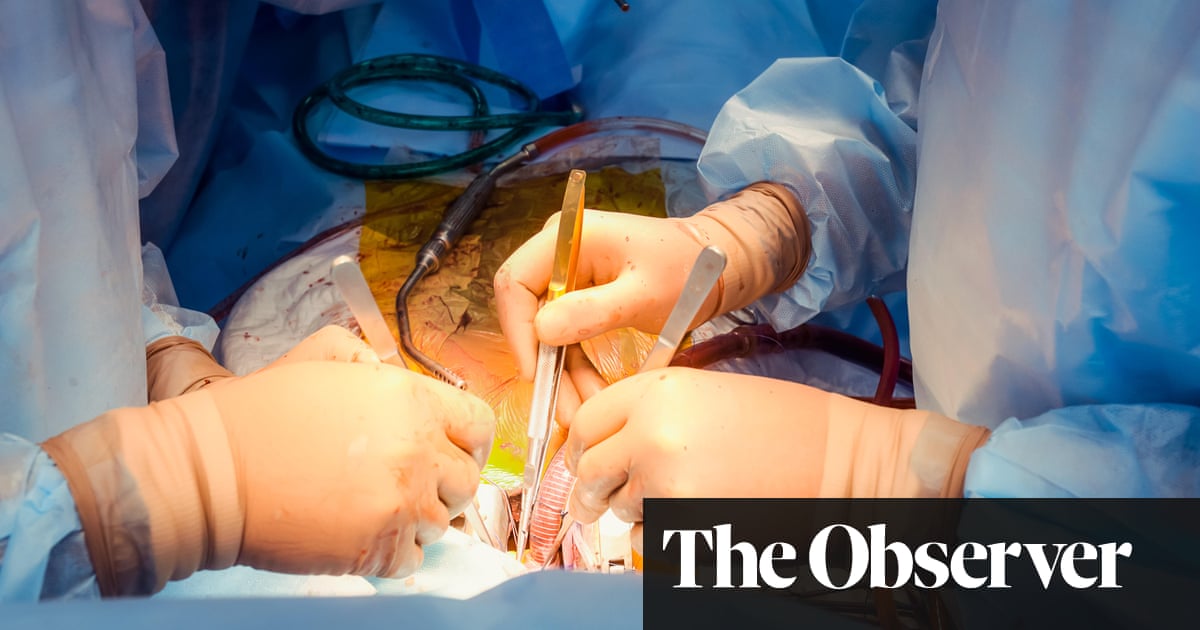
Most stroke patients in England suitable for treatment that can save them from serious disability or even death cannot access it, new figures reveal.
It is estimated that at least 10% of stroke patients can benefit from a treatment known as mechanical thrombectomy. Under the procedure, a wire and stent is manoeuvred towards the brain to pull out the clot blocking the blood flow. The treatment reduces the adverse effects of a stroke and in the best outcomes a patient could walk out of hospital the next day.
But figures from the Sentinel Stroke National Audit Programme (SSNAP) based at King’s College London for the first three months of this year show only 4.3% of stroke patients in England are getting the procedures.
Peter Hooper, 64, given the procedure after a stroke in June 2020, said: “I find it terrifying that there are people who could have a thrombectomy, and be back on their feet within days, that can’t access the treatment.” He said it was vital that treatment was provided for eligible patients and that they were fast-tracked because about two million brain cells die every minute until blood flow is restored.
Speaking at a mechanical thrombectomy awareness day at Stoke-on-Trent last Thursday, NHS England medical director Prof Sir Stephen Powis said the national rollout of mechanical thrombectomy was impeded by the pandemic, but the NHS was committed to ensuring wider access.
Powis said: “It’s one of the most effective clinical interventions that we have in medicine and it’s transformative for those who have suffered a stroke. To see somebody come in with a severe disability and then shortly after the procedure [to] be able to walk out of hospital – as often happens – a day or two later is really remarkable.”
Powis said he was visiting all 24 mechanical thrombectomy centres in England during this year to support the treatment, but there were challenges over workforce and equipment. He said the University Hospitals of North Midlands, where Hooper was treated, was already exceeding a target of giving 10% of stroke patients mechanical thrombectomy and “was one of the best services, if not the best service in the country”.
Dr Sanjeev Nayak, a consultant interventional neuroradiologist at the University Hospitals of North Midlands, said mechanical thrombectomy was effective but more resources were required to ensure wider access. He said: “You can prevent a patient from permanent disability or death if you act quickly. Especially for those patients with a large occlusion of one of the large vessels, the treatment is like a light switch. The patient’s brain comes back to life, and they can recover very quickly.”
The NHS long-term plan in 2019 set a target of treating 10% of stroke patients with mechanical thrombectomy by 2022, but the target was missed and availability depends on where a patient lives. The Observer reported in October last year how a primary school teaching assistant died from a stroke after her family were told the life-saving treatment was not available at weekends.
SSNAP data for England for April 2023 to March 2024 show the thrombectomy rate of patients ranges from 1.7% in West Yorkshire and Harrogate to 8.7% in Thames Valley. The total number of procedures in England increased from 2,684 in 2022/23 to 3,501 in 2023/24, an increase of about 30%.
Speaking at the mechanical thrombectomy event, Maeva May, from the Stroke Association, said mechanical thrombectomy was cost-effective and could save the NHS an estimated £73m each year. She said there had been a significant increase in the number of patients who received the procedure, but there was still improvement required.
She said everyone was aware of the pressures on ambulance services, but it was vital patients arrived at hospital as soon as possible, with each minute counting. She said: “The faster we can get [these patients] to the thrombectomy centre, the better the likelihood of complete recovery.”












